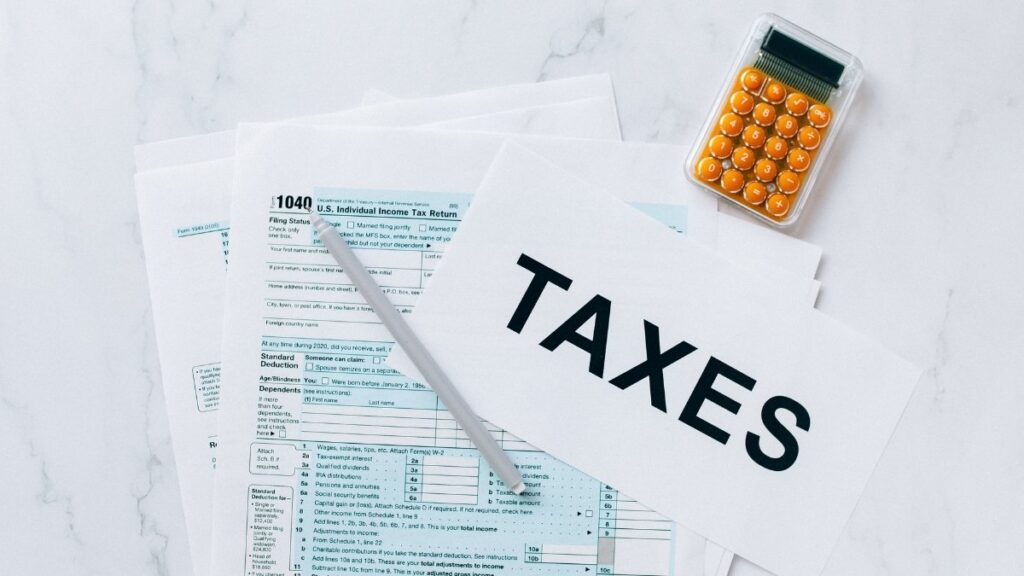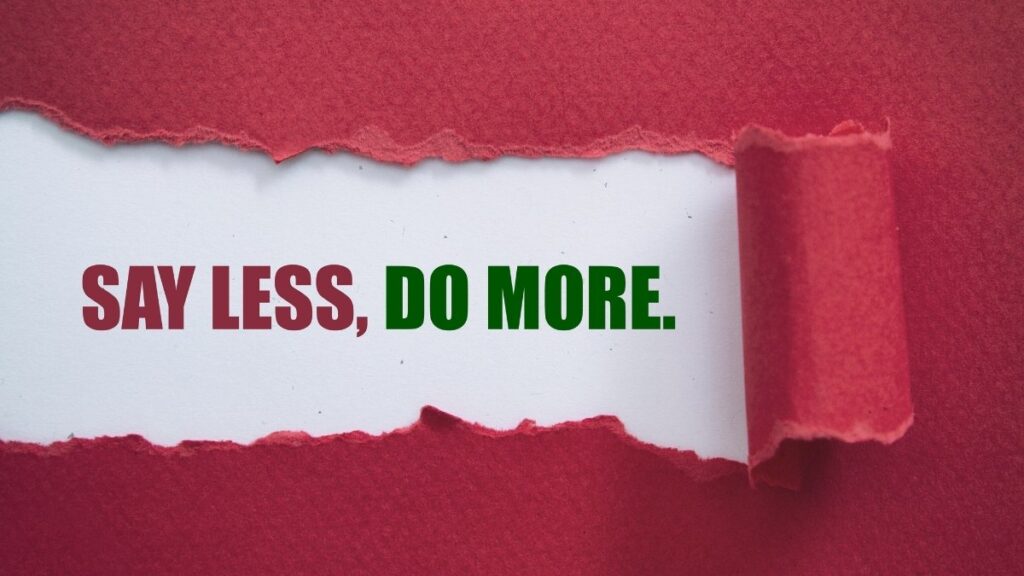I lost $110,000 on my first house before I turned 26. Not because of a market crash or bad luck—but because I made a preventable mistake that nearly 48% of Gen Z and millennials are making right now in 2025.
Nearly half of Gen Z and millennials don’t feel financially secure despite pulling in bigger paychecks than previous generations at the same age . Gen Z’s average credit score has dropped to 676, the lowest of any generation and well below the national average of 715. A staggering 62% of Gen Z have zero emergency savings, while millennials carry an average of $6,961 in credit card debt.
In this guide, you’ll discover the 13 most destructive money mistakes before 30 that cost people hundreds of thousands, current 2025 data showing why these financial mistakes in your 20s are more expensive than ever, actionable steps to fix each mistake starting today, and how avoiding these worst money decisions can build $500k+ in wealth by age 40.
1. You Have No Idea Where Your Money Actually Goes
Let me guess. You think you’re being careful with money. You don’t buy crazy stuff. But somehow, you’re broke two weeks after payday.

Here’s the truth: Most people have zero clue where 30-40% of their income disappears to. It’s not the big purchases that kill you. It’s the $8 here, $15 there, $32 for something you can’t even remember.
Millennials and Gen Z blow over $400 every month on stuff they don’t need. Gen X spends $250. Boomers? Under $200. You’re spending twice as much on junk, and you wonder why they have houses and you don’t.
💡 TIP: Open your bank app right now. Look at the last 30 days. Add up every charge under $50. That number will shock you.
The worst part? You tell yourself “I’ll start tracking when I make more money.” That’s like saying “I’ll start exercising when I’m in shape.” It makes no sense.
Without tracking, you can’t spot lifestyle creep. That’s when your spending grows to match your income. You get a raise, and somehow you’re still broke. The money just vanishes into a nicer apartment, better coffee, more takeout.
💡 TIP: Download Mint or YNAB today. Link your accounts. Set it up before you go to bed tonight. It takes 10 minutes and could save you thousands.
What to do right now:
- Track every single expense for 30 days (yes, everything)
- Calculate your “Big Three” costs: housing, transportation, food
- Find three subscriptions you forgot about and cancel them today
- Set up automatic expense tracking before your next paycheck hits
💡 TIP: Most people have at least 2-3 subscriptions they don’t use. Check your credit card for monthly charges. Kill them now.
2. Buying a House Before You’re Ready: My $110,000 Lesson
I bought a house at 24. I made $24,000 a year. I thought I was smart. I was an idiot.

Here’s what nobody tells you: The mortgage payment is just the start. Then comes property taxes. Insurance. HOA fees. When the AC breaks in July? That’s $4,000. Roof leak? $8,000. The water heater, the fence, the driveway, the everything.
I became “house poor.” Every dollar I made went into that house. I couldn’t invest. Couldn’t save. Couldn’t even go out with friends without feeling guilty.
💡 TIP: If you’re spending every dollar on your house, you’re not building wealth. You’re building a fancy prison.
Here’s the brutal truth about buying right now: You need to earn 80% more than people did in 2020 to buy the same house. But median income only went up 23%. The math doesn’t work unless you’re making bank.
Meanwhile, Gen Z is draining their retirement accounts, skipping meals, and selling their stuff just to afford rent. And you think now’s the time to buy?
💡 TIP: Run this calculation: Take your monthly rent and multiply by 60 months. Now calculate 5 years of homeownership (mortgage + taxes + insurance + maintenance + opportunity cost). Which number is smaller?
Let me show you what that down payment could do instead. Say you scrape together $30,000 for a down payment and $10,000 for closing costs. That’s $40,000.
Put that in the S&P 500 for 10 years at 10% average return? You’d have $104,000. But the equity you build in a house over 10 years? Way less, especially after you factor in interest, taxes, and maintenance.
Renting isn’t “wasting money” when you’re 25. It’s buying flexibility. It’s giving yourself room to build an emergency fund, invest for real, and figure out where you actually want to live.
💡 TIP: If you can’t explain the 28/36 rule (housing under 28% of gross income, total debt under 36%), you’re not ready to buy.
Fix it now:
- Calculate the 28/36 rule with your actual income
- Add up ALL homeownership costs, not just the mortgage
- Compare 5-year total cost: renting vs. buying
- Build 20% down payment PLUS 6-month emergency fund before you even think about buying
💡 TIP: If someone tries to sell you on an FHA loan with 3.5% down, run away. You’ll pay PMI for years and be underwater the second the market dips.
3. Living Without a Safety Net: The 62% Problem
Here’s a scary number: 62% of Gen Z have exactly zero dollars in emergency savings. Zero.

One car repair. One ER visit. One surprise expense, and they’re screwed.
Only 29% of Gen Z and 40% of millennials feel good about their emergency savings. The rest? They’re one bad day away from disaster.
💡 TIP: Check your savings account right now. If it’s under $500, you’re in the danger zone.
The median emergency fund for Gen Z is $400. Boomers have $2,000. That’s five times more cushion. That’s why they sleep better at night.
Without an emergency fund, here’s what happens: Emergency hits → you panic → credit card → high interest → debt spiral → your life sucks for years.
💡 TIP: Your emergency fund should live in a separate bank account. Not your checking. Not your wallet. Somewhere you can’t touch easily.
And please, stop saying “I’ll save when I make more money.” You won’t. You’ll just spend more. The amount you make doesn’t matter. Your habits do.
Here’s the pattern: People who save 10% at $30,000 keep saving 10% at $60,000. People who save zero at $30,000 keep saving zero at $60,000. Your income grows, but so does your lifestyle.
💡 TIP: Set up automatic transfer today. $50 per paycheck. You won’t even miss it after two weeks.
Only 27% of people could cover a major expense without using credit. That means 73% would go into debt for a $1,000 problem. That’s insane.
And get this: 48% of Gen Z and 49% of millennials need higher credit limits just for emergencies. They’re planning to go into debt because they have no backup plan.
💡 TIP: Emergency fund money should earn interest. High-yield savings accounts pay 4-5% right now in 2025. That’s free money while your safety net sits there.
Do this today:
- Open a high-yield savings account (separate from checking)
- Set up automatic transfer of $50-100 every paycheck
- Build to $500 first, then keep going
- Goal 1: $1,000. Goal 2: One month of expenses. Goal 3: Three months. Goal 4: Six months.
- Don’t touch it unless it’s a real emergency (broken car, medical, job loss)
💡 TIP: A real emergency is “I need this or my life falls apart.” A new phone because yours is slow is NOT an emergency.
4. The Credit Card Trap: From $6,961 to 18 Years of Pain
Millennials carry an average of $6,961 in credit card debt. Gen Z carries $3,493. And both groups are paying the highest APR in history: 21.91%.

Let me translate that: You’re paying $1,500+ per year just in interest. For nothing. Just to keep debt you already have.
💡 TIP: Credit cards are useful tools if you pay them off every month. If you carry a balance, they’re wealth destroyers.
Credit card balances for millennials jumped 50% in recent years. Gen Z? Up 62%. This isn’t a small problem. It’s an epidemic.
And people are stuck. 60% of credit card debtors have carried their balance for at least a year. 19% have been carrying it for five years or more.
💡 TIP: If you’ve had the same credit card balance for over a year, you’re not managing debt. You’re drowning in it.
Here’s the killer: 23% of people with credit card debt believe they will NEVER get out. Almost one in four people have just given up.
The minimum payment trap is real. If you have a $6,371 balance at 20.12% APR and only pay the minimum? It’ll take 217 months. That’s 18 years. You’ll pay $9,254 in interest alone.
💡 TIP: Making minimum payments is like bailing out a sinking boat with a teaspoon. It feels like you’re doing something, but you’re still going under.
Let me show you a real example:
$5,000 balance at 22% APR. You pay $150 per month. It takes 4.5 years to pay off. You’ll pay $3,247 in interest. That’s $3,247 that could have been in your investment account growing for decades.
Gen X has it worst, with an average balance of $9,600. They’ve been carrying this weight for years, and it’s crushing them.
💡 TIP: Call your credit card company right now. Ask for a lower APR. Seriously. Many will give it to you just for asking. Even a 3% reduction saves hundreds per year.
45% of credit card debtors say the debt came from emergency expenses. See how everything connects? No emergency fund → credit card → debt spiral.
💡 TIP: Balance transfer cards with 0% APR sound great, but watch the fees. A 3% transfer fee on $10,000 is $300. Do the math before you move money around.
Fix it this week:
- List every card with balance, APR, and minimum payment
- Choose a method: Avalanche (highest APR first) or Snowball (smallest balance first)
- Call each company and ask for lower APR
- Look at 0% balance transfer cards (but calculate fees first)
- Stop using the cards completely until they’re paid off
- Set up autopay for MORE than the minimum (even $20 more helps)
💡 TIP: Switch to debit or cash while paying off cards. If it’s not in your account, you can’t spend it.
5. Ignoring Your Credit Score Will Cost You $250,000
Gen Z’s average credit score dropped to 676 in recent years. That’s the biggest yearly drop since 2020. The national average is 715.

You might think 39 points doesn’t matter much. You’re wrong. It matters more than almost anything.
💡 TIP: Your credit score affects everything: mortgage rates, car loans, insurance premiums, apartment rentals, and even some job applications.
A bad credit score costs you on everything for years. And it takes seven years for negative marks to fall off your report. Seven years of paying extra for being broke in your 20s.
Let me show you the real cost:
$300,000 mortgage over 30 years:
- 760+ credit score: 6.5% rate = $1,896/month = $382,633 total interest
- 680 credit score: 7.5% rate = $2,098/month = $455,280 total interest
- Difference: You pay $72,647 MORE just because your score is lower
💡 TIP: That $72,647 difference? That’s a fully funded retirement account. That’s your kids’ college fund. That’s financial freedom, gone.
The crazy part? Gen Z is 1.5 times more likely to check their credit score than older generations. They know it matters. But they’re still scoring the lowest.
Why? Because knowing about it isn’t the same as fixing it.
💡 TIP: You can check your credit score for free with Credit Karma or at annualcreditreport.com. Do it right now. What you don’t know WILL hurt you.
The factors that hurt your score most:
- Late payments (stay on report for 7 years)
- High credit card utilization (using too much of your available credit)
- Short credit history (you can’t fix this fast, so start now)
- Too many new accounts (stop applying for every store credit card)
💡 TIP: Keep your credit utilization under 30%. Better yet, under 10%. If you have a $5,000 limit, keep your balance under $500.
Do these things today:
- Check your credit score for free (Credit Karma or annual credit report)
- Identify what’s hurting your score most
- Set up autopay for every single bill you have
- Pay down credit cards to under 30% utilization
- Don’t close old credit cards (it hurts your average account age)
- Look for errors on your report and dispute them immediately
💡 TIP: About 20% of credit reports have errors. Check yours. A wrong late payment or unknown account could be killing your score for no reason.
6. Dating Someone Who’s Broke: The Relationship Tax
Here’s something nobody wants to hear: Your partner’s money habits become your habits. Their debt becomes your debt. Their bad choices become your problems.

46% of Gen Z would choose long-term financial stability over romantic love in 2025. That’s higher than millennials at 41%. Gen Z has watched older generations destroy their lives over money fights, and they’re not having it.
💡 TIP: Financial arguments are the #1 cause of divorce. Not cheating. Not in-laws. Money.
33% of Gen Z and millennials now value a partner’s emergency savings more than physical appearance. Think about that. They’d rather date someone with $5,000 saved than someone hot with zero savings.
In some states, your partner’s debt legally becomes yours after marriage. You think you’re marrying a person. You’re actually marrying their credit score, their spending habits, and their $30,000 in student loans.
💡 TIP: “We’ll figure it out together” is code for “I’ll hope they change but they won’t and we’ll fight about money for years.”
Money habits are deeply wired. If someone has spent 28 years being impulsive with money, your love isn’t going to fix that. You can’t save someone from themselves.
💡 TIP: Watch how they handle small money decisions. Someone who impulse-buys $200 shoes when they’re stressed will impulse-buy a $30,000 car later.
Emergency funds and savings habits have become social markers. It’s not about being shallow. It’s about survival. You can’t build wealth with someone who’s actively destroying it.
💡 TIP: Have the money talk within the first 3-6 months. If they dodge it, that’s your answer. Financial secrecy is a massive red flag.
Red flags to watch for:
- Hiding purchases or lying about prices
- Impulse spending constantly
- No emergency fund at 25+
- Job hopping or avoiding work
- Credit cards maxed out
- Living with parents at 30 but spending like they make six figures
💡 TIP: You’re not their parent or their financial advisor. If they’re not already working on their money problems before you met them, they won’t start now.
Do this early:
- Have the money conversation within first 3-6 months of dating
- Discuss: debt levels, savings habits, financial goals, credit scores
- Watch their actual behavior with money, not what they say
- Don’t try to “fix” them (it won’t work)
- Keep finances separate until marriage, and consider a prenup if serious debt is involved
💡 TIP: If they make $50,000 and have zero savings but own a $40,000 car, you’re looking at someone who values image over security. Proceed with caution.
7. The $500/Month Dating Drain Nobody Talks About
I spent $150 per date. Went out 2-3 times per week. Made $24,000 a year.

Do the math. That’s $1,800 to $2,700 per month. On my salary, that was 7-11% of my gross income. Of my actual take-home pay? More like 15-22%.
I was trying to impress women I barely knew with money I didn’t have.
💡 TIP: Expensive dates don’t lead to better relationships. They lead to expectations you can’t maintain and resentment when you can’t keep up.
Dating apps created expensive expectations. Everyone’s posting their fancy dinner pics. You feel pressure to compete. But you’re competing in a game that makes you broke.
In major cities, dinner dates cost $80 to $150. Do that twice a week and you’re spending $640 to $1,200 per month. For what? To sit across from someone and make small talk?
💡 TIP: The best dates cost almost nothing. A walk with coffee. Cooking together. Free museum day. Game night at home. If they need expensive dates to be interested, they’re interested in your wallet, not you.
The “I always pay” trap kills men especially. You feel like you have to pay every time. Meanwhile, she’s ordering appetizers, entrees, dessert, and wine, and you’re doing math in your head wondering if your card will decline.
💡 TIP: Have the money conversation early. Split it, alternate, or set a budget. If she expects you to pay for everything expensive constantly, you found the wrong person.
Here’s the truth: Someone who wants to be with you will be happy with a $10 coffee walk. Someone who needs $150 dinners wants a lifestyle, not a relationship.
💡 TIP: Plan dates that involve doing something together, not just consuming something. Cooking together, hiking, exploring a new neighborhood, game night. These create memories and connection without destroying your budget.
Do this now:
- Set a monthly dating budget ($100-200 max when you’re starting out)
- Suggest alternating who pays or going dutch (have the conversation directly)
- Plan creative low-cost dates that focus on connection
- If every date idea you suggest is “too cheap” for them, you have your answer
💡 TIP: $200/month on dates is reasonable. $500+ per month when you’re making $40,000 is financial suicide. Choose wisely.
8. One Accident Away from Losing Everything: The Insurance Gap
Gen Z is putting off doctor visits to pay rent. They’re selling their belongings, skipping meals, and draining retirement accounts just to survive.

And most of them have no insurance. Or the wrong insurance. Or not enough.
💡 TIP: Being young doesn’t make you invincible. It makes you lucky. Until you’re not.
Here’s what you need right now:
- Health insurance (non-negotiable)
- Auto insurance (liability at $300k/$500k minimum, not state minimum)
- Renters insurance (it’s like $15/month)
- Term life insurance if anyone depends on your income
- Disability insurance if you have a high-earning career
The “I’m young and healthy” fallacy has destroyed more financial lives than almost anything else. You’re healthy until you’re not. And when you’re not, it’s too late to get insurance.
💡 TIP: Insurance is the only thing you buy hoping you never use it. But when you need it, nothing else matters.
Real costs without insurance:
- Appendectomy: $15,000 to $30,000
- ER visit for broken bone: $2,500 to $7,500
- Car accident where you’re at fault: You can lose everything you own
- Sued for damages without umbrella policy: Bankrupt
💡 TIP: Most people have state minimum auto liability ($25,000). One accident and you’ll wish you had $300,000 or more. The extra coverage costs maybe $15/month.
I knew someone who got a $50,000 medical bill without insurance. They’re still paying it off years later. That bill destroyed their credit, their savings, and any chance of buying a house for a decade.
💡 TIP: Renters insurance covers your stuff if there’s a fire, theft, or disaster. It also covers liability if someone gets hurt in your place. For $15-20/month, it’s the easiest financial decision you’ll ever make.
Healthcare costs are crushing Gen Z and millennials. Even with insurance, medical debt is the #1 cause of bankruptcy in America. Without insurance? You’re one accident from financial ruin.
💡 TIP: If you don’t have health insurance through work, go to healthcare.gov and get a marketplace plan. Many people qualify for subsidies that make it affordable.
Do this this month:
- Get health insurance if you don’t have it (employer or marketplace)
- Call your auto insurance and increase liability to $300k/$500k
- Get renters insurance (literally call tomorrow, takes 10 minutes)
- If anyone depends on your income, get $500k term life insurance
- If you make good money, get disability insurance (covers you if you can’t work)
- Review all coverage once per year
💡 TIP: Once your net worth exceeds $500k, get umbrella insurance. It’s cheap coverage (maybe $200/year) that protects you from lawsuits that could take everything.
9. The $500,000 Mistake: Missing Your Employer Match
Nearly 24% of Gen Z employees aren’t enrolled in their company 401(k). That’s three times higher than any other generation.

They’re literally leaving free money on the table. Their employer says “I’ll give you an extra $3,000 per year if you save $5,000,” and they say “No thanks.”
💡 TIP: Not taking your employer match is like going to work and only cashing every third paycheck. It’s free money you earned. Take it.
Here’s a real example: One woman didn’t enroll in her 401(k) for years. She missed out on $60,000 in employer match. If she’d invested that, it would have grown to over $500,000 by retirement.
She gave away half a million dollars because she didn’t click a button.
💡 TIP: Compound interest is the most powerful force in finance. But it only works if you have TIME. Starting at 25 vs. 35 is a $2 million difference.
The average 401(k) balance tells the story:
- Gen Z: $13,500
- Millennials: $67,300
- Gen X (people in their 40s and 50s): Only $10,000 median, and 40% have ZERO
Gen X is approaching retirement with nothing. 53% of them wish they’d started saving earlier. Their mistakes cost them a median of $100,000, some over $500,000.
💡 TIP: Gen X is your warning. They waited. They thought they’d catch up later. The math doesn’t work. You can’t catch up.
Here’s the math that should terrify you:
Starting at 25: $500/month for 40 years at 10% return = $3,164,000
Starting at 35: $500/month for 30 years at 10% return = $1,130,000
Starting at 45: $500/month for 20 years at 10% return = $382,000
Waiting 10 years costs you over $2 million. Waiting 20 years costs you $2.7 million.
💡 TIP: Every year you wait costs you about six figures in final retirement money. Not thousands. Hundreds of thousands.
Time is more valuable than the amount you invest. Someone who invests $3,000/year from 25 to 35 (10 years, $30,000 total) and then stops will have more at 65 than someone who starts at 35 and invests $3,000/year for 30 years ($90,000 total).
That’s the power of starting early.
💡 TIP: If you don’t know what to invest in, choose a target-date fund for your retirement year (like “Target 2060” if you plan to retire around 2060). It automatically adjusts as you age.
Do this tomorrow:
- Enroll in your 401(k) immediately if you haven’t (ask HR)
- Contribute AT LEAST enough to get full employer match
- Aim for 15% total savings rate (including the match)
- Open a Roth IRA and work toward maxing it ($7,000/year in 2025)
- Never, ever touch this money early (see next section)
💡 TIP: Can’t afford 15%? Start with whatever gets you the match. Even 3% is better than zero. Increase by 1% every time you get a raise.
10. Stealing from Future You: Why 46% of Gen Z Raided Their Retirement
Almost half of Gen Z workers have already withdrawn money from their retirement accounts. 46%. Before age 30.

42% did it to pay down debt. They were so broke they robbed their future to fix their present.
💡 TIP: Withdrawing from retirement early doesn’t just cost you taxes and penalties. It costs you decades of compound growth you can never get back.
Here’s what happens when you withdraw early:
- 10% penalty immediately
- State and federal taxes (could be 22-32% depending on income)
- You lose 30-40% of the money before you even see it
But that’s not the worst part.
💡 TIP: The real cost isn’t the penalty. It’s what that money would have become.
Let me show you the devastating math:
You withdraw $10,000 at age 25.
- $1,000 goes to penalty
- $2,200 goes to taxes (22% bracket)
- You get $6,800 in cash
But if you’d left that $10,000 invested for 40 years at 10% return? It would be worth $452,000 at age 65.
You traded $452,000 for $6,800.
💡 TIP: Every dollar you take out early costs you about $45 in retirement. That $200 withdrawal to “fix your car”? You just gave away $9,000 from your future.
68% of Gen Z don’t think they’ll retire comfortably. Of course not. They’re actively destroying their retirement before it even starts.
And 31% of millennials have also tapped their retirement early. This isn’t just a Gen Z problem. It’s a “young people are broke and desperate” problem.
💡 TIP: Build your emergency fund specifically so you never have to touch retirement money. That’s its entire purpose.
The hardest part? Once you do it once, it’s easier to do it again. It becomes your emergency fund. But it’s the most expensive emergency fund in history.
💡 TIP: If you absolutely must take money from retirement, take a 401(k) loan instead of a withdrawal. At least you pay yourself back with interest instead of paying the IRS.
Do this right now:
- NEVER withdraw from retirement unless you’re literally about to be homeless
- If you’ve already withdrawn, forgive yourself and commit to never doing it again
- Build that $500-$1,000 emergency fund so you have options
- Increase your 401(k) contribution to make up for lost time
- Calculate what your early withdrawal actually cost you in future money
💡 TIP: Show this math to yourself when you’re tempted: Taking out $5,000 today costs you about $225,000 at retirement. Is your “emergency” worth $225,000?
11. Making More, Having Less: The Lifestyle Inflation Trap
Young Americans earn more than previous generations at the same age. But they’re building less wealth.

How? Lifestyle inflation. Also called lifestyle creep. It’s the silent wealth killer.
💡 TIP: The gap between what you earn and what you spend determines your wealth. Not your salary. The gap.
Here’s how it works:
- You make $40,000, live on $38,000, save $2,000
- You get a raise to $50,000
- You move to a nicer apartment, get a better car, eat out more
- Now you live on $48,000, still save $2,000
You make 25% more money but you’re not any wealthier.
💡 TIP: “I’ll save when I make more” is a trap. You won’t. You’ll just want more things.
Millennials and Gen Z spend over $400 per month on nonessentials. Boomers spend under $200. Younger generations are spending twice as much on stuff they don’t need while complaining they can’t afford to save.
Every raise becomes a new baseline. You get used to the nicer stuff. Then you need more money to feel the same satisfaction. It never ends.
💡 TIP: When you get a raise, immediately increase your 401(k) contribution by half the raise amount. You never see that money, so you never miss it.
Here’s the real comparison:
Person A: Makes $50,000, spends $45,000, saves $5,000 per year
- 10 years = $50,000 saved + growth
- Building wealth
Person B: Makes $100,000, spends $98,000, saves $2,000 per year
- 10 years = $20,000 saved + growth
- Going backward
Person A will be wealthier even though they make half as much.
💡 TIP: Wealth is built by what you keep, not what you make. A doctor making $300,000 and spending $295,000 is broke. A teacher making $50,000 and saving $10,000 is building wealth.
The trap is that your friends are doing it too. Everyone’s upgrading together. New cars, nicer apartments, expensive brunches, trips to Europe. You feel pressure to keep up.
But they’re not posting about their credit card debt. They’re not showing you their empty retirement accounts.
💡 TIP: Live like you make 20% less than you do. Bank the difference. In 10 years, you’ll have options they don’t.
Fix this now:
- When you get a raise, wait 3-6 months before any lifestyle upgrades
- Increase your 401(k) contribution by half the raise amount immediately
- Calculate your “savings gap” (income minus expenses)
- Every raise should increase the gap, not close it
- Set savings as a percentage of income, not a dollar amount
💡 TIP: Automate your savings the day you get a raise. If the money never hits your checking account, you never have a chance to spend it.
12. Financial Illiteracy: Learning from TikTok and Paying for It
80% of millennials and Gen Z are using AI for financial advice. Sounds smart, right?

35% of the AI answers were wrong. And over half of people who used AI made a bad financial decision because of it.
💡 TIP: Free advice is worth what you pay for it. And AI trained on internet data includes all the garbage along with the good stuff.
30% of Gen Z investors get their primary financial education from TikTok and YouTube. They’re learning about money from 19-year-olds making $200 videos in their parents’ basement.
Schools don’t teach personal finance. Your parents probably don’t understand it either. So young people turn to social media and get wrecked.
💡 TIP: A 60-second TikTok can’t teach you financial literacy. It can sell you a course, push you into crypto, or make you feel bad about yourself. That’s about it.
Gen Z shows an aggressive appetite for crypto and individual stocks. They want to get rich quick. They don’t want to learn the boring basics that actually build wealth.
So they gamble on meme stocks and lose. They buy crypto at the peak and watch it crash. They follow “finfluencers” who make money by getting them to click, not by giving good advice.
💡 TIP: If someone on social media is selling you a course about making money, their real income is from selling courses, not from the method they’re teaching.
The cost of financial ignorance is massive:
- Buying bad investments
- Carrying high-interest debt for years
- Missing tax-advantaged accounts
- Not understanding compound interest
- Getting scammed
- No retirement planning
💡 TIP: Financial literacy is free. Books, podcasts, courses, blogs. The information exists. The only cost is time and the humility to admit you don’t know something.
Educated investors earn better returns. They avoid scams. They understand risk. They know the difference between investing and gambling. They build wealth slowly instead of losing it quickly.
💡 TIP: Read one personal finance book this quarter. Just one. “I Will Teach You to Be Rich” by Ramit Sethi or “The Simple Path to Wealth” by JL Collins. That’s it. Start there.
Do this this month:
- Read one good personal finance book (see recommendations above)
- Follow quality sources: r/personalfinance subreddit, Mr. Money Mustache blog, Choose FI podcast
- Take Khan Academy’s free personal finance course (it’s actually good)
- Learn about: compound interest, index funds, tax-advantaged accounts, insurance basics
- Ignore TikTok “finfluencers” unless they have real credentials (CFP, CFA)
- Consider working with a fee-only fiduciary financial advisor (not commission-based)
💡 TIP: A fee-only fiduciary financial advisor charges you directly and is legally required to act in your best interest. A commission-based advisor makes money by selling you products. Choose carefully.
13. The $45,000 Mistake: Your Car Is Stealing Your Retirement
The average new car payment in 2025 is $700 to $900 per month. Let’s use $800.

If you invested that $800 per month instead of sending it to a car company, you’d have $1.76 million after 40 years at 10% return.
Your car costs you nearly $2 million in retirement money.
💡 TIP: Cars are depreciating assets. The second you drive off the lot, it loses value. It will never make you money. It will only take your money.
Here’s what actually happens when you buy that $45,000 new car:
- You put $3,000 down
- Finance $42,000 at 7% for 72 months
- Payment: $697 per month for 6 years
- Total paid: $53,184
- After 5 years, the car is worth maybe $20,000
- You lost $25,000 just to own a car that got you to work
💡 TIP: You’re not buying the car. You’re renting it from the bank for $697/month, and at the end, the bank made $11,184 in interest and you’re left with a used car.
Now look at the smart play:
- Buy a reliable used car for $15,000 cash
- Invest the $697 payment you’re not making for 6 years
- After 6 years: $62,000 invested + $10,000 car value = $72,000
- Versus the new car person who has a car worth $20,000
That’s a $52,000 difference in just 6 years.
💡 TIP: Used cars 3-5 years old have already depreciated 40-60%. Let someone else take that loss. You buy it when it’s stabilized.
The status game is killing you. You buy the nice car to impress people who don’t care. They’re too busy looking at their own cars to notice yours.
Meanwhile, that $800/month is quietly destroying your financial future. Every. Single. Month.
💡 TIP: Follow the 20/4/10 rule: Put 20% down, finance for no more than 4 years, keep total payment under 10% of take-home pay. If you can’t do all three, you can’t afford the car.
Car loans are getting longer. 84-month loans (7 years!) are common now. You know what happens in 7 years? The car needs major repairs. And you’re still paying for it.
Luxury brands cost even more. Higher insurance. More expensive maintenance. Premium gas. Everything costs more just so you can have a fancy badge.
💡 TIP: A 10-year-old Toyota Camry gets you to work just as well as a new BMW. One costs $8,000 and runs forever. One costs $60,000 and needs $2,000 repairs when the warranty ends.
Do this instead:
- Buy a used car that’s 3-5 years old
- Pay cash if possible (save up, buy a beater, upgrade as you save more)
- If you must finance: 20% down, 4-year max loan, payment under 10% take-home pay
- Calculate TOTAL cost: payment + insurance + gas + maintenance
- Drive it until it has 200,000+ miles
- Avoid luxury brands (you’re paying extra for a logo)
💡 TIP: Every dollar you don’t spend on a car payment is a dollar that can grow for 30+ years. Choose wisely.
The Bottom Line: Fix It Now or Pay Forever
Gen X is in their 40s and 50s now. Their median retirement account balance is $10,000. 40% have zero. They wish they could go back.
They lost a median of $100,000 to financial mistakes. Some lost over $500,000. Over half of them wish they’d started saving earlier.
You’re reading their lessons. You have the data. You have the warnings. You have the roadmap.
💡 TIP: The difference between financial freedom and living paycheck to paycheck at 40 is the decisions you make right now in your 20s.
Here’s what we covered:
- Track your money before you can manage it
- Don’t buy a house until you have 20% down + 6-month emergency fund
- Build emergency fund now ($500, then $1,000, then 3 months expenses)
- Kill high-interest credit card debt aggressively
- Protect and improve your credit score
- Date people who have their financial act together
- Stop overspending on dates and entertainment
- Get proper insurance today, not when you need it
- Start investing now – every year costs you hundreds of thousands
- Never raid your retirement accounts
- Fight lifestyle inflation every time you get a raise
- Educate yourself about money (it’s free)
- Buy reliable used cars and invest the difference
💡 TIP: You don’t have to fix all 13 things today. Pick one. Fix it this week. Then pick another next month.
The compound effect works both ways. Small good decisions compound into wealth. Small bad decisions compound into being broke at 50.
💡 TIP: Small changes compound just like investments. Saving $200/month at age 25 becomes $632,000 at age 65. Start small, stay consistent, let time do the work.
Take Action Right Now
Pick ONE mistake from this list that hit you in the chest. The one where you thought “Oh no, that’s me.”
Not three mistakes. Not five. Just ONE.
Fix it this week.
Then come back next month and fix another one.
💡 TIP: Trying to fix everything at once leads to fixing nothing. Pick the easiest win or the biggest problem. Fix just that one thing.
The best time to fix these mistakes was five years ago. The second best time is today. Right now. This moment.
Future you is counting on current you to make the right choice.
Don’t let them down.
💡 TIP: Set a reminder in your phone for one month from today. Title it “Fix one more money mistake.” When it goes off, come back and pick the next thing to fix.
Avoiding these money mistakes before 30 isn’t about saving a few thousand dollars. It’s about building a foundation for seven-figure wealth. The habits you build now determine whether you retire at 55 or work until you die. The best time to fix your financial mistakes was yesterday. The second best time is right now, today, this moment.
Stop reading. Pick your one thing. Go fix it.

